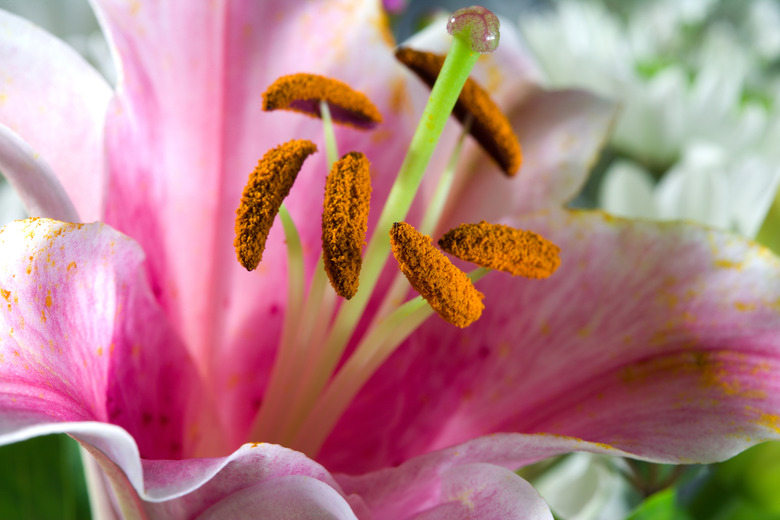How To Keep Lilies Alive
A lily can be found almost anywhere on the globe, and besides their natural beauty they are an ancient flower with many meanings associated with them. Peace, motherhood, purity and hope are some of those.
Things Needed
- Plant pruners
- Water
- Sunny outdoor area
- Bulb fertilizer or bone meal
- Mulch
A lily can be found almost anywhere on the globe, and besides their natural beauty they are an ancient flower with many meanings associated with them. Peace, motherhood, purity and hope are some of those. Often presented as seasonal gifts in a pot, lilies don't usually last long once the very short initial blooming period ends. You can keep lilies alive and bring them into bloom again by following the right planting procedure.
Step 1
Prune the lily carefully after the blooms die by removing the dead flowers and clipping any brown leaves from the plant.
Step 2
Place the pot in a sunny window or location where it is exposed to sun for five or more hours per day. Keep it watered moderately; too wet soil will rot the bulb. If the plant leaves begin to yellow and fall off, keep the soil dry because the plant is going dormant and won't absorb as much water.
- A lily can be found almost anywhere on the globe, and besides their natural beauty they are an ancient flower with many meanings associated with them.
- Often presented as seasonal gifts in a pot, lilies don't usually last long once the very short initial blooming period ends.
Step 3
Transplant the lily outside after all danger of frost has passed. Prepare the hole for the lily by digging a hole 3 to 4 inches deep. You want well-drained, loose soil for the lilies.
Step 4
Invert the pot and remove the lily. Carefully separate the root strands with your fingers, and pull the root ball out away from the bottom of the bulb. Do this as gently as possible, however some damage may result, but if the roots remain in a knotted clump beneath the bulb they will likely rot and saving your lily will not be successful. You can use water to loosen the soil and roots to make this task easier.
- Transplant the lily outside after all danger of frost has passed.
- Do this as gently as possible, however some damage may result, but if the roots remain in a knotted clump beneath the bulb they will likely rot and saving your lily will not be successful.
Step 5
Place the bulb in the hole you prepared, spreading the roots out beneath it. At this point with a new lily there shouldn't be any offshoots to separate, they were likely divided before being potted by the grower. Refill the hole and gently pat the dirt but don't compact it. Plant multiple lilies 10 to 12 inches apart.
Step 6
Water the bulb immediately once it is planted outdoors. Adding a dissolvable, light fertilizer to the water will help the lily get established. Use a 10-10-10 fertilizer, adding the recommended amount per gallon of water from your package. The 10-10-10 indicates the percentages of nitrogen, phosphorus and potassium in the mix.
- Place the bulb in the hole you prepared, spreading the roots out beneath it.
- Adding a dissolvable, light fertilizer to the water will help the lily get established.
Step 7
Remove any dead leaves and stems. You may find the old stem dies off and new shoots appear. Do not expect your lily to sprout and bloom again this season, likely it will take another year for the lily to establish and bloom again. If you are lucky, you may get one that does sprout and bloom again before winter.
Step 8
Keep the lily evenly watered. Mulch the ground around the lily to both protect the roots from excess heat and maintain even moisture in the soil. In the fall add bone meal or bulb fertilizer and work it into the soil.
- Remove any dead leaves and stems.
- In the fall add bone meal or bulb fertilizer and work it into the soil.
Step 9
Pile mulch over the location of the bulb before winter or heavy freeze, to help protect it from freezing. Use an 8-inch-thick layer of straw, leaves, wood chips or ground corn cobs. Remove this in the spring after danger of frost has passed and new shoots arrive.
